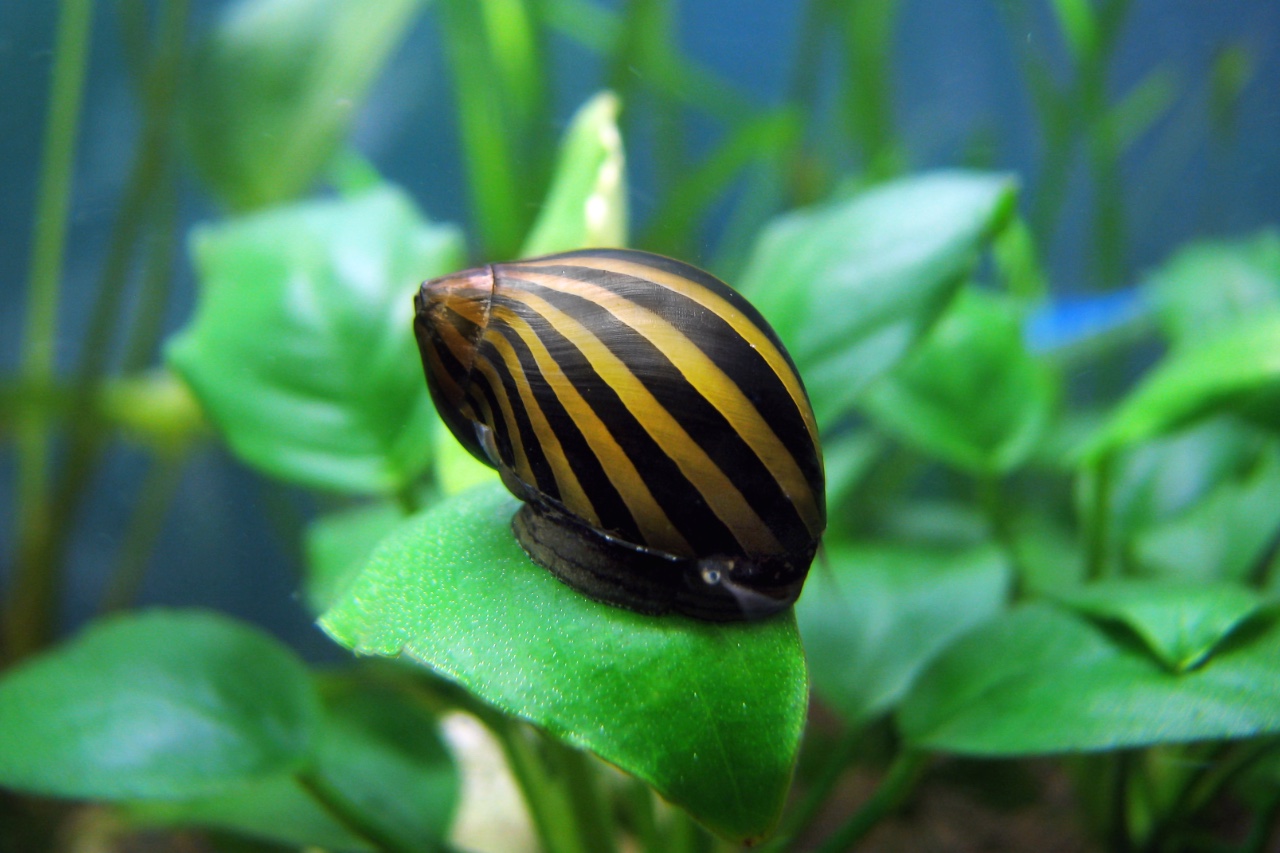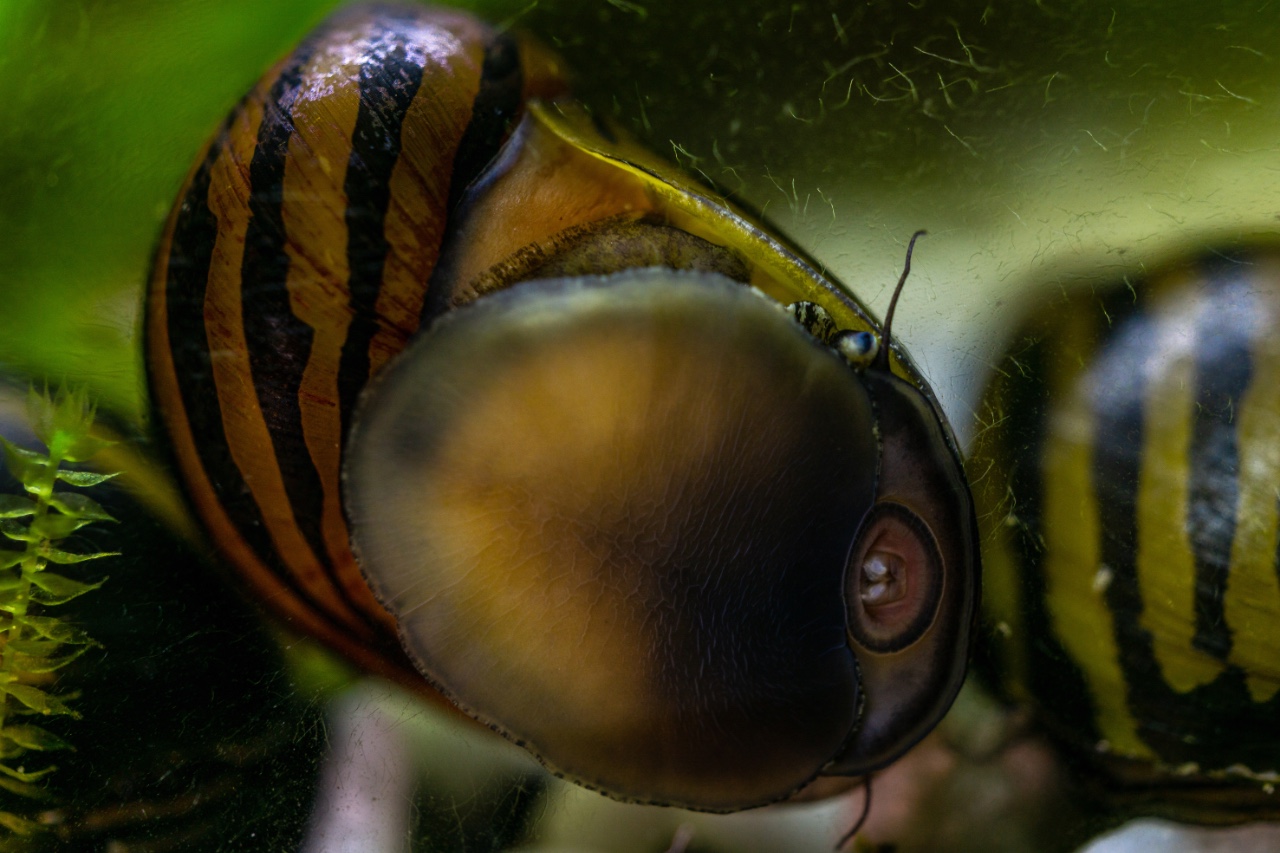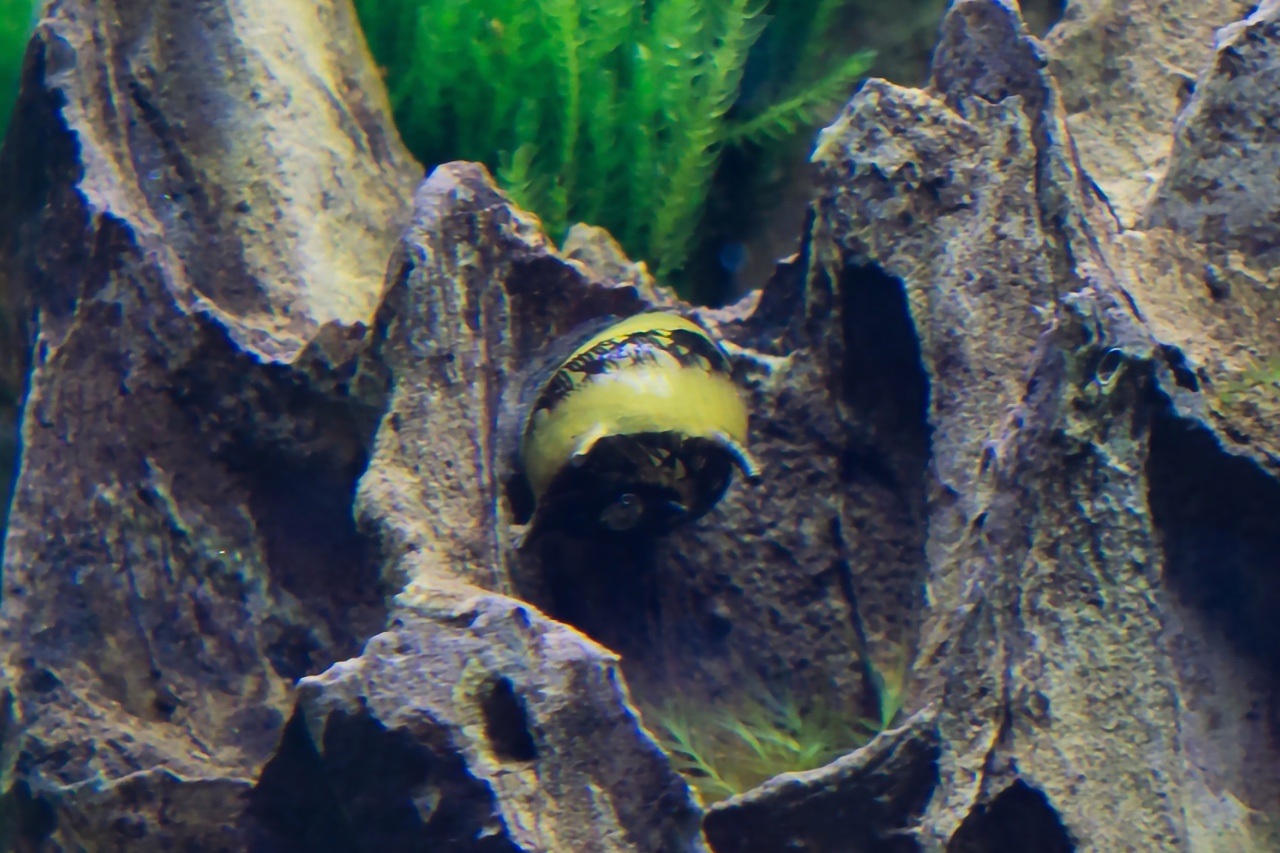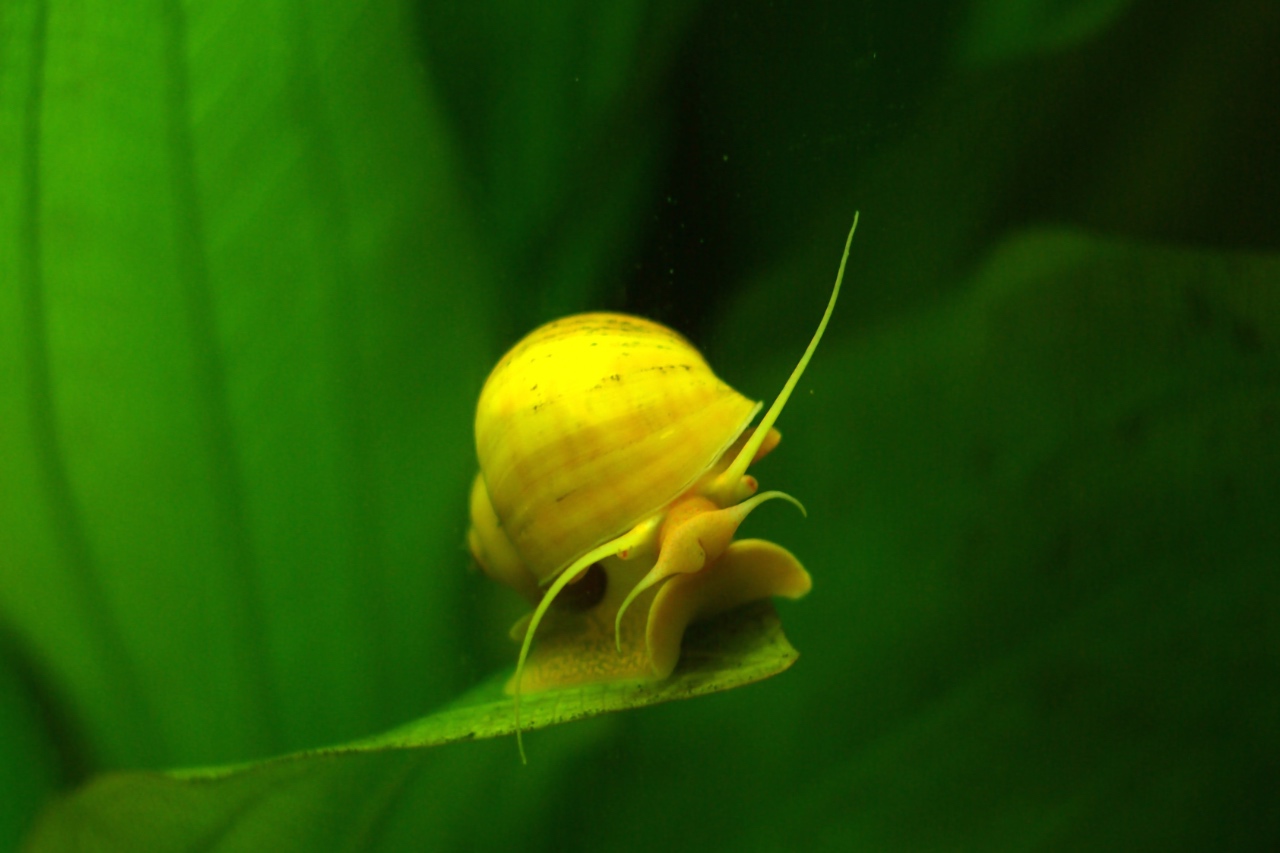Nerite snails are peaceful members of the aquarium cleaning crew. They make your tank look clean and shining because they are the best algae-eating snails. They will clean algae from every corner of your aquarium.
These come in a variety of colors and patterns. They will add vividness and activity while moving around and cleaning the tank.
They can be easily kept with a beginner aquarium hobbyist who will make mistakes. These snails are easy to care for, feed, and breed. They are hardy and can survive in both saltwater and freshwater aquariums.
Their non-aggressive nature and the ability to go along with any fish species make them famous among aquarists. You don’t have to worry about the size of the tank. They don’t occupy much space, so keeping them in a small tank is easy.
This care guide will cover Nerite snail care, feeding, breeding, and everything you need to know. So, keep reading till the end.
| Category | Rating |
|---|---|
| Family | Neritidae |
| Temperament | Peaceful |
| Diet | Herbivore |
| Lifespan | 1-2 Years |
| Care Level | Easy |
| Size | Up to an inch |
| Color Form | Species Dependent |
| Compatibility | Peaceful Community |
Nerite Snails’ Overview

Neritidae family has 200 species, and Nerite snails are one of them. Some of the species originated from the brackish water of Eastern Africa, so they need a tank with brackish water to survive. They are different from mystery snails.
Other species that need saltwater originated from the Caribbean or Pacific coast. Some species have adapted to live in freshwater, so you won’t face any problems while keeping them in a freshwater tank.
But make sure the other fish in the tank are non-aggressive and small. Otherwise, they will easily become prey to the larger ones.
How long do nerite snails live?
Nerite snails may survive from 1 to 2 years.
How big do nerite snails get?
Nerite snails can grow up to an inch.
Where to buy nerite snails?
They are quite hardy and are one of the best algae-eater snails that clean the tank effectively. These snails are quite popular and are easily available in different pet stores. They can be bought for $4 per snail, making them affordable.
However, some of their species (such as horned snails) can be costly as they are not easy to breed in captivity. Overstocking can also affect their cleaning activity.
Nerite Snail Behavior
Snails are not as active as other excellent algae eaters, making them a good companion to others as their activity won’t disturb any calmer fish.
A freshwater Nerite snail will show different behavior in the tank. One of them is falling over. They can flip themselves back with the help of their flexible muscle foot. But sometimes, they might need a little push from you.
How to tell if nerite snail is dead?
If a nerite snail is not moving, many people think it is dead in the tank due to its odd sleeping behavior, but it is necessary to double-check.
It also needs to sleep after its hectic tank cleaning schedule. They usually sleep once in 2-3 days instead of once in 24 hours. They will sleep seven times to work for 30 hours in a cycle of 13-15 hours.
Nerite Snails’ Appearance
The snails have a hard, coiled shell above the muscular foot that moves side by side, pushing the snail forward. They also have two pairs of sensitive tentacles that help them identify food and danger.
All the snails share the same shape and structure, but the color and patterns vary from species to species. A healthy freshwater Nerite snail can reach up to 1 inch. You can identify different types of Nerite snails by appearance.
Some of them are given below –
- Zebra Nerite Snails—These Nerite snail species have black and yellow stripes across the shell, all pointing towards the center. The shade of the coloration can vary.
- Tiger Nerite Snails—These species have the same pattern as the Zebra snails, but the strips are bright orange and black and more jagged, making them quite different from the zebra snails.
- Olive Nerite Snails— These species are common among aquarists and pet stores. The coloration can only be judged by the name, but a few have patterns. The black lining on the shell gives them a different but attractive look.
- Horned Nerite Snails— These species have thick black and yellow stripes. One of the stripes has markings that look like a horn, hence the name. This pattern makes them stand out from the rest of the species.
- Black Racer Nerite Snails—These snails are available in black and greyish colors. They will add splendid beauty to your fish tank.
Nerite Snails’ Ideal Habitat and Tank Conditions
Nerite snails can thrive in both freshwater and saltwater habitats. However, the aquarium water conditions of both habitats are the same for them. The saltwater Nerite snails are usually found in coastal habitats like mangroves or estuaries.

These habitats have plenty of rocks and other surfaces that can trigger algae growth. Nerite snails are the habitat of forests and mountain streams.
| Conditions | Parameters |
|---|---|
| Min tank size | 5 gallons |
| Temperature | 72-78°F |
| pH | 8.1-8.4 |
| Hardness | 12-25 dH |
| Nitrate level | < 20mg/L |
| Brackish Tolerance | 1.000-1.005 |
The saltwater habitat needs a salinity level of 1.020-1.028 sg. It also needs a lot of hiding space, which can be created using live rocks. These rocks will also help with algae growth.
You can include aquarium plants and driftwood to grow algae in a freshwater setup. Since snails don’t feed on plants, slow-growing plants like Java Ferns will be best for your tank. We recommend you establish a planted aquarium for these tiny snails.
For substrate, make sure to add fined grains or sandy substrate for a Nerite snail tank. It will keep the sensitive antennas of the snails safe from getting scratched. You can also add a calcium-rich substrate. It will keep their shells strong and healthy.
These snails are very sensitive to intense lighting arrangements in your aquarium. Moderate lighting arrangements are good for them. Never keep your nerite snail tank in direct sunlight. It can harm them.
You don’t need a lot of equipment for them. A filter and a heater are enough to keep the aquarium water conditions right for their habitat. They will also reduce the levels of ammonia and nitrate.
They usually climb up the tank to reach the upper layer of water. So, make sure to lower the water level by 1 or 2 inches to let them swim on the upper levels. They can also try to escape the tank, so keep the tank’s lids shut tightly.
How many nerite snails per gallon?
You can keep a few snails in the beginning to learn more about their behaviors and requirements. We will advise you to keep only 1 nerite snail per 5 gallons. It will reduce the risk of overcrowding in small-size aquariums.
How many nerite snails in a 10-gallon tank?
You can keep 2 nerite snails in a 10-gallon aquarium.
Nerite Snails’ Tank Mates
Nerite snails, as we all know, are peaceful and small. They will thrive best with other small and non-aggressive community fishes who don’t try to eat them. The larger and more aggressive fishes can scare them, and they won’t easily come out of their shells.
Any cichlid species or the one that shares the same behavior, you should avoid them. In comparison, peaceful tank mates like Tetras, Barbs, and Guppies are more compatible with them.
You can add peaceful species like Ghost shrimp. They are also compatible with other species. Normally, the mix of these friendly creatures will be best. It will add more engagement and liveliness to the tank.
Just make sure the size of the tank and water conditions are suitable. Also, avoid adding more snails to a small tank. It will overcrowd the tank, and no one will get enough to eat.
What to Feed Nerite Snails?
Are you worried about feeding nerite snails? Nerite snails are herbivores. They usually eat algae which helps them keep the tank clean. With their sensory tentacles and radula, they detect and scrape them off different surfaces.
You don’t have to add anything to the aquarium if there are enough algae in the tank for them to feed on. But if you are cleaning the tank regularly or there isn’t enough surface for algae formation, you can add algae wafers or green vegetables.
What do nerite snails eat?
They can eat tank algae like green spot algae, soft green algae, and soft brown algae. You can also feed them algae wafers that sink to the bottom of the tank, and snails can get them easily. You can feed spinach and lettuce or homemade food.
Add food only if there isn’t sufficient algae formation, or you will overfeed them. Overfeeding or underfeeding is never good for any creature.
Nerite Snail Care

Healthy nerite snails are strong but can suffer from different health problems. Most of them are easy to control, whereas others can have fatal effects if you do not properly care.
The root cause of disease in a snail is its shell. If not taken care of, it can adversely affect its health. A change in coloration can also indicate poor health.
Sometimes, shell growth is halted. This can be a sign that the snails are not getting fed properly. Another reason for the stopped growth is low water temperature. Maintaining the right water conditions can restore or avoid this.
Overfeeding can also cause problems in them. The most common one is the discoloration of the snail’s shell.
Another problem is the lack of calcium. It keeps the shell strong, so its deficiency can lead to its thinning, and sometimes, you might notice a crack. Adding a calcium substrate is another solution to this problem in these conditions.
You might see white spots on as well. These can be a sign of parasite infection. Getting either internal or external infection can be fatal for them. Adult nerite snails often get a disease called oedema or dropsy. In this disease, the bodies of these snails fill up with fluid, making it more difficult for them to move.
The most critical thing that you should remember is copper. It is toxic to most invertebrates, and so is to snails. So, check the ingredients before adding anything to the water. Many medicines contain copper.
Breeding Nerite Snails
How to breed nerite snails?
Breading these snails is a little tricky. Before making many attempts, you may need to know complete details about the nerite snail breeding process.
Do nerite snails reproduce asexually?
Most snails breed asexually, but Nerite snails require both genders for the process. They are popular because breeding nerite snails is difficult in freshwater. Hence, there is no risk of overcrowding in a tank.
How to hatch nerite snail eggs?
These snails require brackish water for successful breeding, so you will need a separate breeding tank. These can lay eggs in freshwater, but the larvae need brackish water to survive. You can move the eggs from a freshwater aquarium to a breeding tank or the snails to the new aquatic environment.
But don’t abruptly move a freshwater snail to the saltwater. First, move them with the water from their previous tank, then gradually increase the saline water in the tank over a couple of hours. Do this until the water level has tripled.
The breeding tank should contain as many snails as possible, and the male and female ratio should be even. The number of snails should depend on the size of the tank. Don’t overcrowd it.
Once the snail acclimates to their new aquatic environment, they start to breed. The female nerite snails lay eggs, and the male fertilizes them. The nerite snail eggs spread everywhere in the tank, and the eggs look like white spots on the dark surface. These develop into larvae in a couple of weeks.
You should use only the sponge filter for the breeding tank, as the larvae (baby snails) will be small enough to get sucked by the filter. This way, nerite snail reproduction is possible.
Are Nerite Snails for You (Summary)?
Nerite snails are wonderful little invertebrates. They are available in different colors and patterns, giving a unique look to snails. After reading this care guide, you can easily pet them. So, they need the least aquarium maintenance.
Both a beginner and an experienced can keep them. They graze on algae the whole day, which helps keep the aquarium clean. You don’t have to add anything to the tank if there are sufficient algae.
These small and peaceful snails will thrive if their companions share the same temperament and won’t try to eat them. They won’t come out of their shell easily if they are scared or uncomfortable.
These snails are also easy to breed, but the larvae need brackish water. Set up a separate breeding tank. They will grow up to 1 inch. If kept in a healthy environment, the nerite snail’s lifespan is up to 2 years.
They will add variation to the tank with their colorful appearance and movement.
Do you have Nerite snails in the tank? How do you care for them? What qualities do you like the most about them? Let us know in the comment below…

